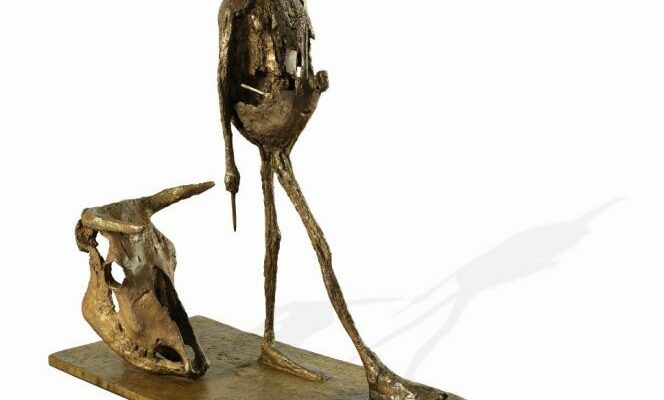Died in 1959 at the age of 55, Germaine Richier has everything of a pioneer. First French sculptress to receive the Blumenthal prize, in 1936, she will also be the first living female artist exhibited at the National Museum of Modern Art. Jagged, pierced, fractured, his tortured statuary devours the void and espouses the tragedies of the century. Its history, however, could be that of erasure, despite the constant interest of a handful of French merchants, such as Jacques de la Béraudière, now based in Brussels.
“Germaine Richier’s market has grown both slowly and steadily over the past thirty years, summarizes Paul Nyzam, director of the post-war art department at Christie’s France. It is a strength because it reveals that this market is neither speculative nor artificial. To put it simply: this is a market for real collectors. ” ” But, adds the specialist, it is also a weakness because a stronger and more spectacular take-off would have cast a clearer spotlight on his work and contributed to bringing new players to this market. » Preceding by three weeks the monograph devoted to it by the Center Pompidou since 1er March, the Clavé Fine Art and Dina Vierny galleries simultaneously pay tribute to him until April 22.
In Bourdelle’s studio, Germaine Richier rubbed shoulders with the Swiss sculptor Alberto Giacometti (1901-1966) in 1926-1927, to whom she has too often been compared. Their methods are, however, poles apart, one operating by subtraction of matter, the other by aggregate. Germaine Richier invented during the war, which she spent in Switzerland, a sculpture that undid the balance, populated by hybrid beings, woman-insect, man-forest, prefiguring the work of Louise Bourgeois (1911-2010) or Eugène Dodeigne (1923-2015), silent sculptor from the North, who was recently exhibited at the Christophe Gaillard gallery.
Prices that stay low
César (1921-1998), his junior by almost twenty years, has total admiration for him. Decades apart, their posthumous trajectories bring them closer together. In both cases, a complicated succession has put their market under glass. When the historian Valérie Da Costa published a monograph on Germaine Richier with Norma editions in 2000, the sculptor’s heirs refused to authorize the reproduction of the images.
Caesar’s posterity will be burdened by the long succession war between his wife and the last companion of the sculptor. After twelve years of procedure, each ended up putting water in its wine to ensure consistency in the dissemination of the artist’s work.
You have 57.68% of this article left to read. The following is for subscribers only.
